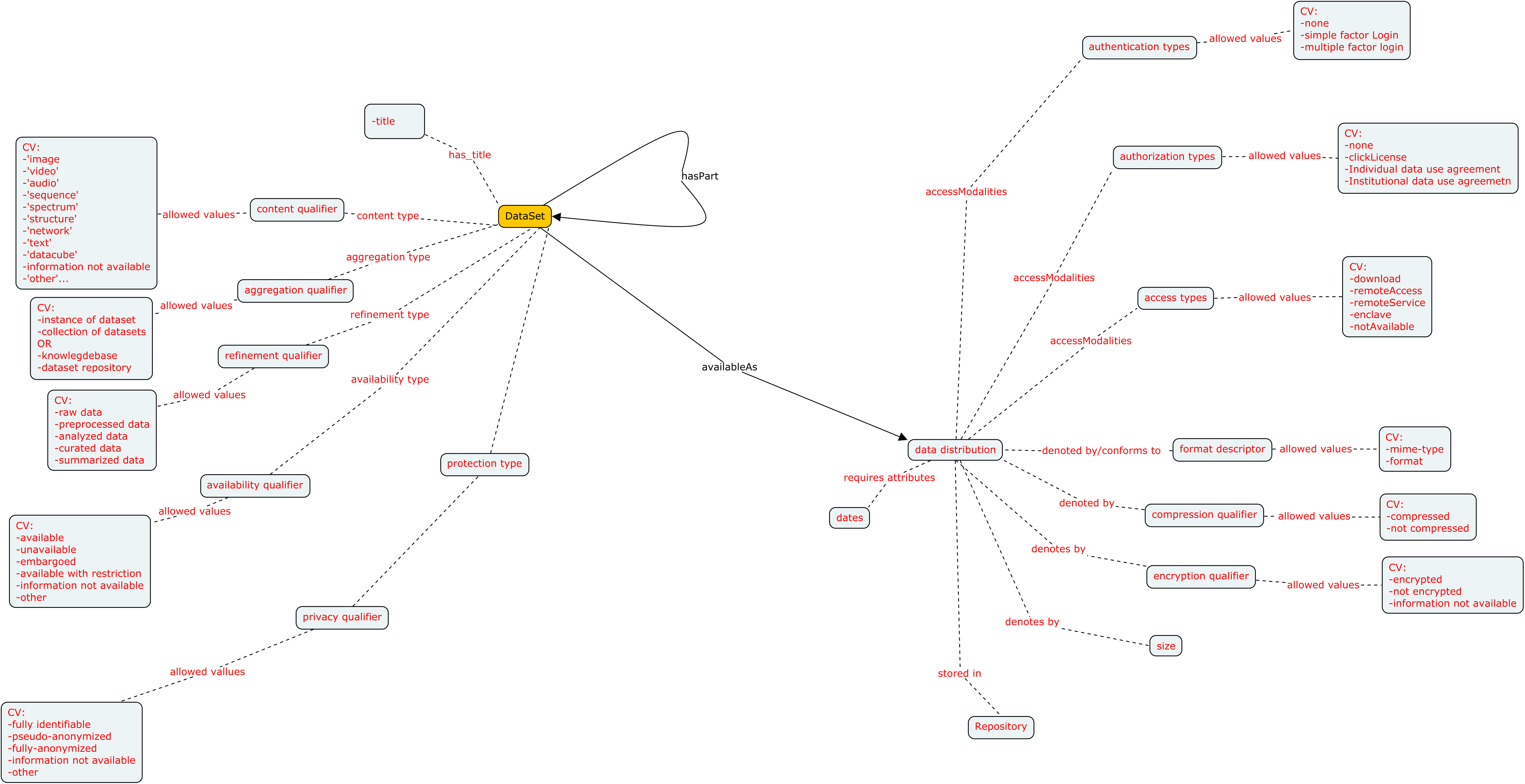7. Dataset About¶
Describing what the dataset is about (i.e what was the scope, objective, materials) and providing information about the type of data associated with the given dataset:
- Document the nature of information available in a dataset through the Biocaddie ‘data type’ object.

In this context, the ‘data type’ required to annotate a DataSet should be viewed as a content type [terminology needs to be specified]). This encompasses the nature of the signal recorded in a dataset or information content of interest. For instance: gene expression data or phenotypic data, electronic health records But mime-type may be used. * chemical * sequence * spectrum * audio * image * video * …
but other descriptors may be used such as Biosharing, Scicrunch or re3data category/data domain descriptors.
Data aggregation type:
In the context of DataMed indexing, the information obtained from repositories may correspond to datasets served individually or may correspond to collections or records. As these 2 situations represent a very different metadata context, the Biocaddie DATS model allows to distinguish between the two cases.
collection (as in ‘collection of instances’)
singleton (as in ‘individual instance’)
Data refinement type:
To describe the level of data processing associated with the data available from the dataset and its distributions….[terminology needs to be specified])
- raw data
- preprocessed data
- analyzed data
- summarized data
- curated data
- reannotated data
- …
data privacy protection type: (applicable only to human/clinical data)
- fully identifiable none
- pseudo-anonymized data
- fully anonymized data
- not information available
- …
Document the Material, object, scope and Biological Entities the dataset is about and their characteristics or properties.
Document the nature of intervention and Treatment applied to the Material, if any or if applicable.
Data Types and specific Platform
Currently, in DataMed, datasets can be search according to Data Type (.e.g Proteomics data) and/or by Platform (e.g. Illumina) DATS provides a mechanism via DataType object to qualify the nature of the data collected in a Dataset. The 4 facets/attributes allow to incrementally specify the type of information contained by the data and how it has been produced
- data acquisition / method type:
- This attribute allows to indicate the technique or technology , also known sometimes as data modality used to acquire the signal. For instance:
- ‘crystallography’,
- ‘mass spectrometry’
- ‘nucleic acid sequencing’,
- ‘computational simulation’
- ‘questionaire based survey’
- ‘nuclear magnetic resonance spectroscropy’
- ‘nuclear magnetic resonance imaging’
- ‘questionnaire’
- …
- platform/instrument type
- Agilent, Bruker,Affymetrix,Illumina,SeaHorse
- HumanHap550v3.0
- HumanExome-12 v1.1 BeadChip
- Sentrix Human-6 Expression BeadChip
- SureSelect Human All Exon v2 - 44Mb
- HiSeq 2000
- …